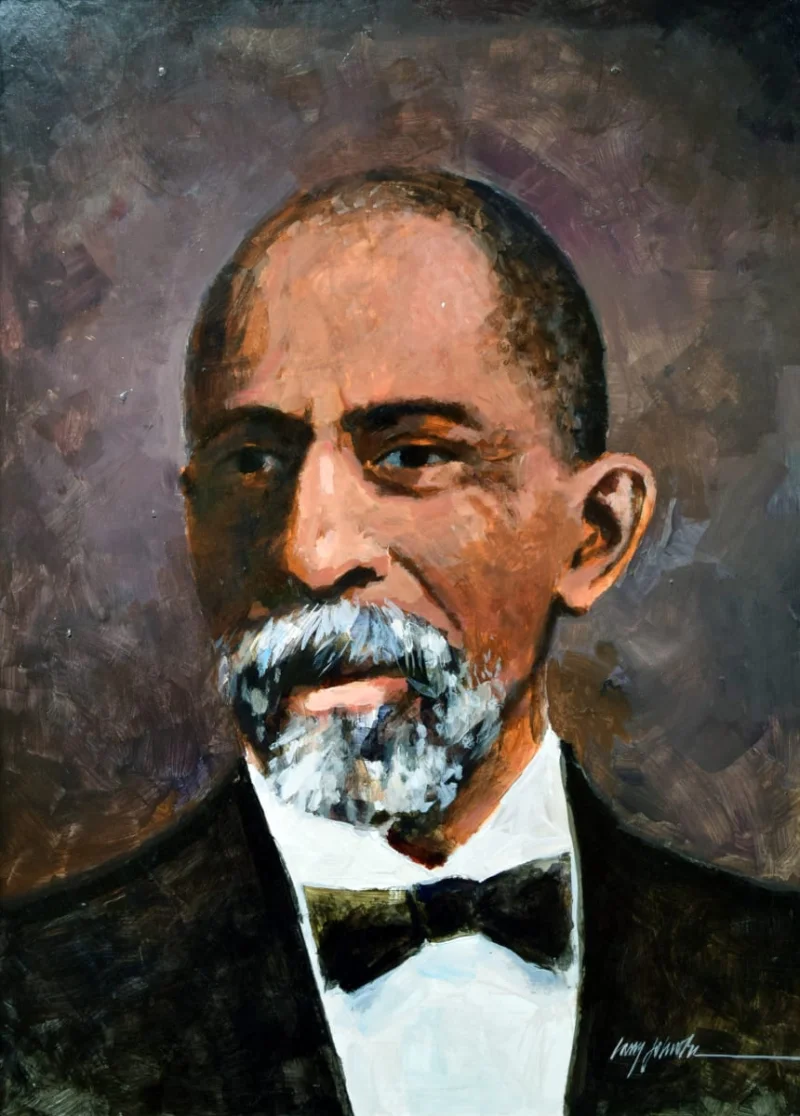Short Summary
Luther Burbank was an American botanist, horticulturist, and pioneer in agricultural science. He is renowned for developing more than 800 strains and varieties of plants over his 55-year career. His work significantly contributed to the fields of plant breeding and agriculture, making him a key figure in the development of new plant species. Burbank's innovations include the Shasta daisy, the Burbank potato, and numerous fruits, flowers, grains, and vegetables.
Early Life & Education
Luther Burbank was born on March 7, 1849, in Lancaster, Massachusetts, as the thirteenth of fifteen children in his family. His parents, Samuel Walton Burbank and Olive Ross, were farmers who instilled in him an appreciation for agriculture. After completing his education at local schools, Burbank did not pursue formal higher education but was deeply influenced by Charles Darwin’s writings, particularly "The Variation of Animals and Plants under Domestication." This book inspired Burbank to explore plant breeding and agriculture, setting the foundation for his future achievements.
Career Highlights
Burbank began his career in horticulture by developing the Burbank potato, which later became widely cultivated in Ireland. In 1875, he moved to Santa Rosa, California, where he established a nursery, greenhouse, and experimental farm. Over his career, he developed hundreds of plant varieties, including fruits like the plumcot and vegetables like the spineless cactus. His methods and results drew international attention, leading to collaborations with agricultural experts and institutions worldwide. Despite not having formal scientific training, his work laid important groundwork in the field of plant genetics and hybridization.
Major Achievements
- Developed the Burbank potato, which significantly improved food security in Ireland.
- Created the Shasta daisy, a popular ornamental flower known for its beauty and hardiness.
- Introduced over 800 new plant varieties, including numerous fruits, vegetables, and flowers.
- Advanced the field of plant breeding with innovative techniques and crossbreeding methods.
- His work inspired future generations of horticulturists and plant geneticists.
Famous Quotes
- "Flowers always make people better, happier, and more helpful; they are sunshine, food, and medicine to the soul."
- "The greatest service which can be rendered any country is to add a useful plant to its culture."
Interesting Facts
- Burbank never kept detailed records of his experiments, relying on his intuition and observational skills.
- He was awarded a grant by Andrew Carnegie to support his research and plant breeding efforts.
- Burbank was referred to as the "wizard of horticulture" due to his extraordinary plant development skills.
- His legacy is preserved at the Luther Burbank Home and Gardens, a National Historic Landmark in Santa Rosa.
- He was commemorated on a U.S. postage stamp in 1940.
Legacy / Influence
Luther Burbank's contributions to horticulture and agriculture have had a lasting impact on plant breeding and cultivation practices. His innovative methods and plant varieties continue to influence agricultural research and development today. The wide range of plants he developed enriched biodiversity and agricultural productivity, and his work remains a cornerstone in modern horticultural studies.
FAQ
Q: Why is Luther Burbank famous?
A: Burbank is famous for developing over 800 plant varieties and contributing significantly to the field of plant breeding.
Q: What is one of Burbank's most famous plant creations?
A: The Burbank potato, which was widely cultivated in Ireland and other countries.
Q: Did Luther Burbank have formal scientific training?
A: No, he did not have formal scientific training but relied on his intuition and observational skills in plant breeding.












